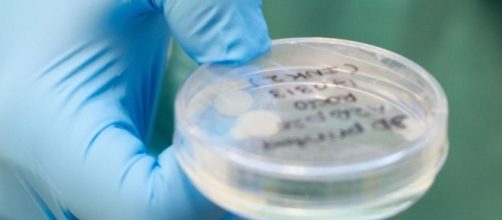3D printing of human tissue promises to create a revolution in health care, leading to the replacement and repair of human organs with material produced by a patient’s Stem Cells. Along those lines, ZME Science is reporting that a group of researchers at Sahlgrenska Academy have printed human Cartilage using a bioprinter. The process promises to create new procedures that could treat osteoarthritis, a condition that causes joint pain when cartilage gets worn down in the knees and elbows.
The way the experiment worked was that cartilage cells were extracted from patients who had recently undergone knee surgery.
The cells were processed into stem cells and then overlaid on a scaffold with the bioprinter. As the cells multiplied, they were given growth factors so that they changed back into cartilage cells. Experienced surgeons cannot tell the difference between the printed cartilage and the natural kind.
Cartilage is the rubbery substance the covers the ends of bones, creating a cushion for joints to bend without pain. Cartilage tends to wear away over time due to constant use, causing joint and eventually lower back and hip pain.
Currently, there is no reliable cure for osteoarthritis. Doctors treat the condition by trying to manage the symptoms, including pain. Sometimes surgery and joint and hip replacements are indicated.
Patients are also encouraged to lose weight, perform stretching exercises, and use assistive devices.
The ability to create human cartilage at will obviously provide a new treatment option. A person suffering from osteoarthritis would have his or her stem cells harvested and then turned into cartilage. Then the cartilage would be implanted in the joint where the condition has become manifest. The osteoarthritis would actually be cured, and the patient spared pain and inconvenience.
Of course, some more research is needed before this procedure shows up in a clinical setting. Researchers have to determine whether the printed cartilage is entirely compatible enough to be implanted. Then the scaffold would have to be made so that it could be safely absorbed into the human body.
Such a procedure would provide incalculable benefit for hundreds of millions of people. Arthritis Foundation notes that one in two adults will develop osteoarthritis in the knee, one in four over the age of 85 in the hip, and one in 12 over the age of 60 in the hand. For most people, the condition provides torment and can substantially inhibit mobility. A treatment using regrown cartilage would significantly improve the quality of life for older people especially, as well as prevent other conditions that osteoarthritis can lead to.

